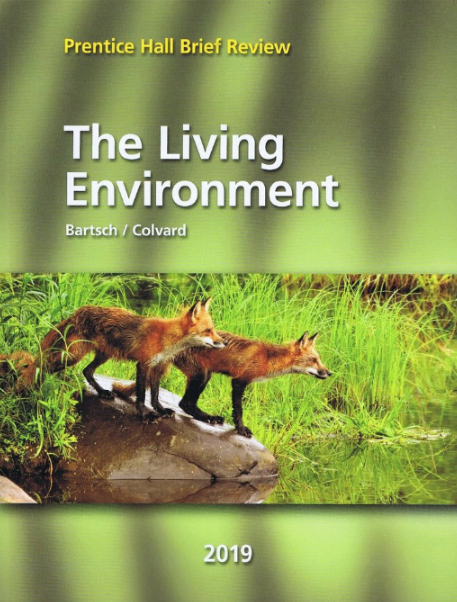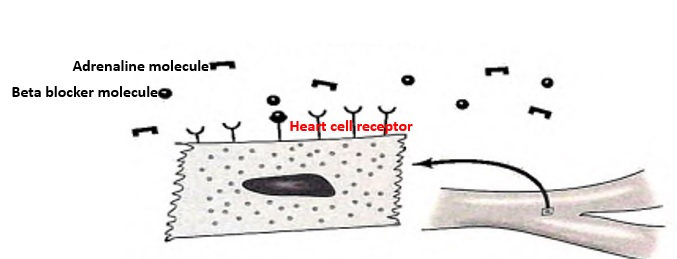
Prentice Hall Brief Review: The Living Environment 2019
ISBN: 9781418292164
Textbook solutions
All Solutions
Page 15: Practice Questions
Exercise 1
Step 1
1 of 2
The answer is 2. This is because from a few bacteria, the end result of the experiment yielded thousands of bacteria, meaning that reproduction occurred. For the digestive part, bacteria digested the nutrient solution in the experiment thus helped in reproducing those bacteria.
Result
2 of 2
2
Exercise 2
Step 1
1 of 2
The answer is 4. A mitochondria is the powerhouse of the cell. This is responsible for producing energy in all cells for specific functions including respiration.
Result
2 of 2
4
Exercise 3
Step 1
1 of 2
The answer is 1. From ingesting food, this is broken down into smaller parts until its nutrients are extracted from the bulk. This is then converted to energy by the mitochondria in order to be used for specific functions of the cell.
Result
2 of 2
1
Exercise 4
Step 1
1 of 2
The answer is 4. Cell membrane separates the inside contents of a cell to the outside. This is composed of a lipid bilayer which protects it from the outside. Being a lipid, the cell membrane becomes a semi permeable membrane.
Result
2 of 2
4
Exercise 5
Step 1
1 of 2
The answer is 3. Homeostasis is the ability to maintain a steady state despite changes occurring in the external environment. This transfer of molecules makes both the inside and outside of a cell balanced.
Result
2 of 2
3
Exercise 6
Step 1
1 of 2
The answer is 2. Diffusion is the movement of solutes from a higher concentration to a lower concentration while facilitated diffusion is the movement of molecules across cell membranes with the aid of a protein and osmosis is the process wherein molecules move from a less concentrated solution to a more concentrated one deeming both sides equal.
Result
2 of 2
2
Exercise 7
Step 1
1 of 2
The answer is 1. The active transport mechanism maintains the unequal concentration of ions in each side of the cell. It is the movement of molecules from a lower concentration into a higher concentration.
Result
2 of 2
1
Exercise 8
Step 1
1 of 2
The answer is 4. Diffusion is the movement of solutes from a higher concentration to a lower concentration. This movement, from C to B displays the action of diffusion which is common in plant cells.
Result
2 of 2
4
Exercise 9
Step 1
1 of 2
The answer is 1. This process happens due to the principle applied “where sodium goes, water follows” thus causing the cell to shrink. This process may cause an imbalance in the environment and may cause damage to the cell.
Result
2 of 2
1
Exercise 10
Step 1
1 of 2
The answer is 4. This is because also of the principle “where sodium goes, water follows” if a saltwater fish is put in freshwater, the cell of the fish will bloat due to the amount of salt present in their bodies, thus the fish will also accumulate water inside causing it to increase in size and die eventually.
Result
2 of 2
4
Exercise 11
Step 1
1 of 2
The answer is 3. Diffusion is the movement of solutes from a higher concentration to a lower concentration. The movement of the molecules is caused by the pull of molecules towards the lower concentration.
Result
2 of 2
3
Exercise 12
Step 1
1 of 2
The answer is 4. The mitochondria is one of the structures in a cell that uses nutrients and convert them into energy. This energy is used by the cells in order to perform certain functions essential for surviving.
Result
2 of 2
4
Exercise 13
Step 1
1 of 2
The answer is 4. Diagram below shows the organization of animals. from cell to tissues to organs to organ systems then the organism itself. This means that the bottom of the diagram which is the cell, it is the most basic unit of an organism.
Result
2 of 2
4
Exercise 14
Step 1
1 of 2
The answer is 3. In order for organs to be considered as part of the same system, they have to carry out the same function when put together. Systems in the body include respiratory, digestive, reproductive, nervous and endocrine.
Result
2 of 2
3
Exercise 15
Step 1
1 of 2
The answer is 2. By beating faster, more oxygen is carries into the circulation by way of blood. These oxygen molecules are delivered to muscles in order to help the muscles function as they should.
Result
2 of 2
2
Exercise 16
Step 1
1 of 2
The answer is 4. Without movement, these animals would not be able to find shelter, avoid predators and obtain food. Their ability to move also coordinates certain structures of the body like their legs, eyes, and muscles.
Result
2 of 2
4
Exercise 17
Step 1
1 of 2
The answer is 1. The lungs, skin and kidney all have functions of excreting waste. The skin excretes waste through sweat with toxins within it. The lungs excrete waste by exhaling the bad air a person has inhaled and the kidneys are used to excrete waste by way of urine.
Result
2 of 2
1
Exercise 18
Step 1
1 of 2
The answer is 2. Homeostasis is the ability to maintain a steady state despite changes occurring in the external environment. This transfer of molecules makes both the inside and outside of a cell balanced.
Result
2 of 2
2
Exercise 19
Step 1
1 of 2
The answer is 2. The arrows depicted is represented by excretion which is the process of getting out waste, transport, which is the process of moving substances from one part to another part of the body and respiration which is the process of exchanging oxygen to other parts of the body.
Result
2 of 2
2
Exercise 20
Step 1
1 of 2
The answer is 3. The ability of cells to replicate or produce offspring, can replace damaged cells or can further increase in size making a certain part larger.
Result
2 of 2
3
Exercise 21
Step 1
1 of 2
The answer is 4. The mitochondria have respiratory cells which help it function in transporting oxygen to other parts of the body in order to function properly. For example, the mitochondria which are located in cells of muscles, help them move the way they are supposed to.
Result
2 of 2
4
Exercise 22
Result
1 of 1
The algae without mitochondria did not survive because the mitochondria are considered as the powerhouse of the cell which means that it supplies the energy in the cell.
Exercise 23
Result
1 of 1
Insulin receptor have specific shapes for the insulin. A specific insulin molecule connects to the receptor and is the only one that can activate it. In order for the glucose to be excreted or be of use, insulin receptors are needed.
Exercise 24
Result
1 of 1
The liver won’t be able to maintain homeostasis. The receptors located in the cell can be deficient, hence the proper function of the liver cannot be fully functional. The liver would not receive the adequate amount of insulin needed.
Exercise 25
Result
1 of 1
Diffusion is the movement of solutes from a higher concentration to a lower concentration. The principle here is that in a plant cell, the water outside is transferred to the inside by diffusion causing it to regain crisp.
Exercise 26
Result
1 of 1
The diffusion of oxygen and carbon dioxide in the lungs. Oxygen diffuses from the alveolar sacs and into the blood vessels while carbon dioxide diffuses from the blood and into the alveoli.
Exercise 27
Result
1 of 1
1) Diffusion – this is not possible because in order to make diffusion possible, factors like the specific part of the cell is needed to function for example the mitochondria.
2) Active transport – this is also not possible because in order for active transport to occur, energy is needed and in order for energy to be made, the mitochondria must work.
2) Active transport – this is also not possible because in order for active transport to occur, energy is needed and in order for energy to be made, the mitochondria must work.
Exercise 28
Result
1 of 1
1) Pond animal – The result of this is because of active transport wherein the salt concentration was transferred inside of the cell making it swell and burst.
2) Land animal – This got smaller by way of diffusion wherein the water inside the cell transferred outside causing it to shrink.
2) Land animal – This got smaller by way of diffusion wherein the water inside the cell transferred outside causing it to shrink.
Exercise 29
Result
1 of 1
Salt is a good way of killing bacteria in food. They act by sucking out the water in their cells causing it to die. This process is called osmosis. Osmosis is the transport of water from a selectively permeable membrane to a solute with an impermeable membrane.
Exercise 30
Result
1 of 1
Adrenaline is a hormone that may save a heart suffering from congestive heart failure. This hormone makes the heart active enough to pump out the excess volume inside.
Exercise 31
Step 1
1 of 2

Result
2 of 2
adrenaline molecule, beta blocker molecule and heart cell receptor.
Exercise 32
Result
1 of 1
The beta blocker competes with the adrenaline molecule in the heart cell receptor in order to decrease the effects of adrenaline to the heart.
Exercise 33
Result
1 of 1
People without heart failure who take beta blockers can cause certain adverse effect such as slowing the pumping of the heart and slowing the filling of the heart causing a delay in transport of blood across the body
unlock

